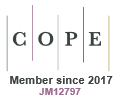WF24225Predicting potential postfire debris-flow hazards across California prior to wildfire
 , Paul W. Richardson, David B. Cavagnaro, Stefani G. Lukashov, Mary Ellen Miller and Donald N. Lindsay
, Paul W. Richardson, David B. Cavagnaro, Stefani G. Lukashov, Mary Ellen Miller and Donald N. Lindsay
Destructive postfire debris flows triggered by short-duration bursts of high-intensity rainfall and excessive runoff within 3 years following fire continue to impact California. Using a simplified wildfire scenario, we predicted potential postfire debris-flow hazards statewide. We suggest the maps are useful for identifying areas that pose the greatest postfire geohazards.
This article belongs to the collection: Establishing Directions in Postfire Debris-Flow Science.
WF24225 Abstract | WF24225 Full Text | WF24225PDF (7 MB) Open Access Article





